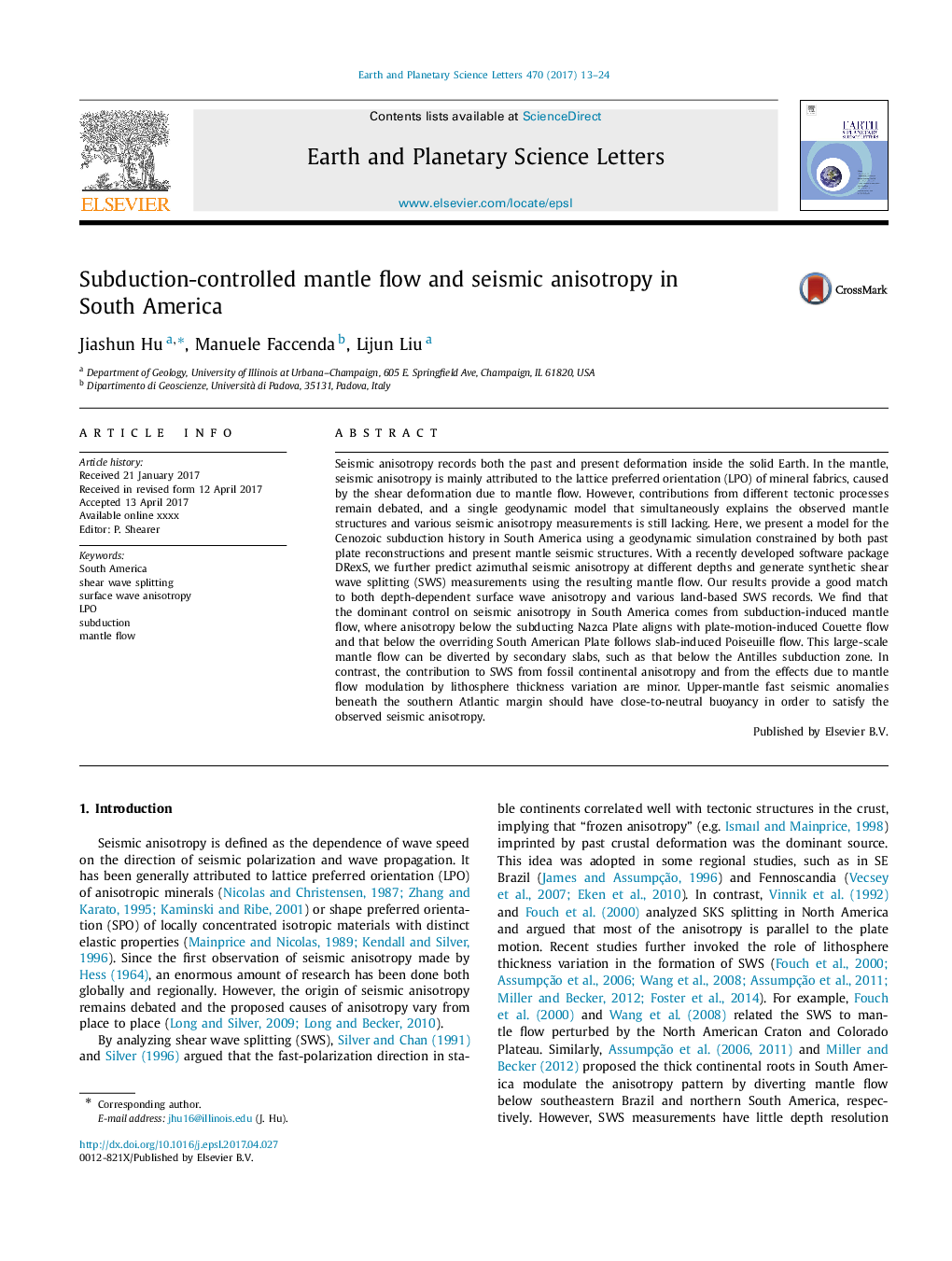| کد مقاله | کد نشریه | سال انتشار | مقاله انگلیسی | نسخه تمام متن |
|---|---|---|---|---|
| 5779616 | 1634686 | 2017 | 12 صفحه PDF | دانلود رایگان |
عنوان انگلیسی مقاله ISI
Subduction-controlled mantle flow and seismic anisotropy in South America
ترجمه فارسی عنوان
جریان انحرافات لرزه ای تحت کنترل فرومغناطیسی در جنوب امریکا
دانلود مقاله + سفارش ترجمه
دانلود مقاله ISI انگلیسی
رایگان برای ایرانیان
کلمات کلیدی
موضوعات مرتبط
مهندسی و علوم پایه
علوم زمین و سیارات
علوم زمین و سیاره ای (عمومی)
چکیده انگلیسی
Seismic anisotropy records both the past and present deformation inside the solid Earth. In the mantle, seismic anisotropy is mainly attributed to the lattice preferred orientation (LPO) of mineral fabrics, caused by the shear deformation due to mantle flow. However, contributions from different tectonic processes remain debated, and a single geodynamic model that simultaneously explains the observed mantle structures and various seismic anisotropy measurements is still lacking. Here, we present a model for the Cenozoic subduction history in South America using a geodynamic simulation constrained by both past plate reconstructions and present mantle seismic structures. With a recently developed software package DRexS, we further predict azimuthal seismic anisotropy at different depths and generate synthetic shear wave splitting (SWS) measurements using the resulting mantle flow. Our results provide a good match to both depth-dependent surface wave anisotropy and various land-based SWS records. We find that the dominant control on seismic anisotropy in South America comes from subduction-induced mantle flow, where anisotropy below the subducting Nazca Plate aligns with plate-motion-induced Couette flow and that below the overriding South American Plate follows slab-induced Poiseuille flow. This large-scale mantle flow can be diverted by secondary slabs, such as that below the Antilles subduction zone. In contrast, the contribution to SWS from fossil continental anisotropy and from the effects due to mantle flow modulation by lithosphere thickness variation are minor. Upper-mantle fast seismic anomalies beneath the southern Atlantic margin should have close-to-neutral buoyancy in order to satisfy the observed seismic anisotropy.
ناشر
Database: Elsevier - ScienceDirect (ساینس دایرکت)
Journal: Earth and Planetary Science Letters - Volume 470, 15 July 2017, Pages 13-24
Journal: Earth and Planetary Science Letters - Volume 470, 15 July 2017, Pages 13-24
نویسندگان
Jiashun Hu, Manuele Faccenda, Lijun Liu,
